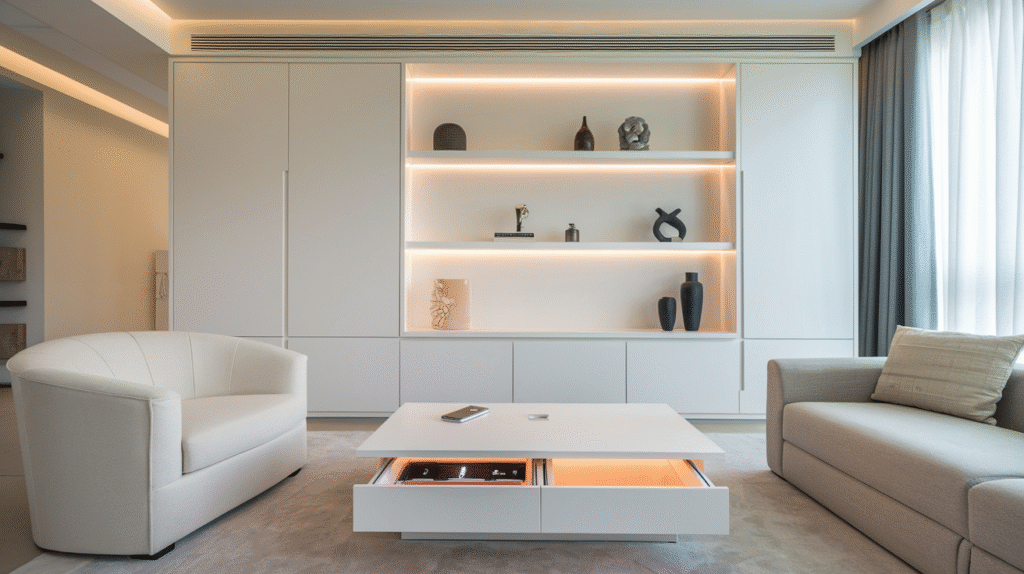Contemporary Storage Furniture Trends for 2025
Ever notice how the ultra-trendy apartment in your Instagram feed somehow never shows a single storage bin? As if those influencers exist without stuff. Spoiler: they don’t.
Let’s get real about contemporary storage furniture for 2025. I’ll show you how the sleekest homes are hiding everything from Kindle chargers to kid’s toys without sacrificing an ounce of style.
Modern storage solutions have evolved beyond the basic bookshelf. Today’s multi-functional storage furniture pieces serve as statement decor while cleverly concealing life’s necessities. The days of choosing between practicality and aesthetics are officially over.
But here’s what most designers won’t tell you about 2025’s biggest storage trend…
Minimalist Multi-functional Storage Solutions
A. Space-saving designs for urban living
Urban apartments are shrinking, but our need for stuff isn’t. That’s where 2025’s clever space-saving storage comes in. The trend is clear: furniture that works twice as hard as you do.
Wall-mounted systems have evolved beyond basic shelving. Now we’re seeing floating credenzas with push-to-open compartments that practically disappear when not in use. Staircase storage is having a major moment too—each step doubling as a pull-out drawer.
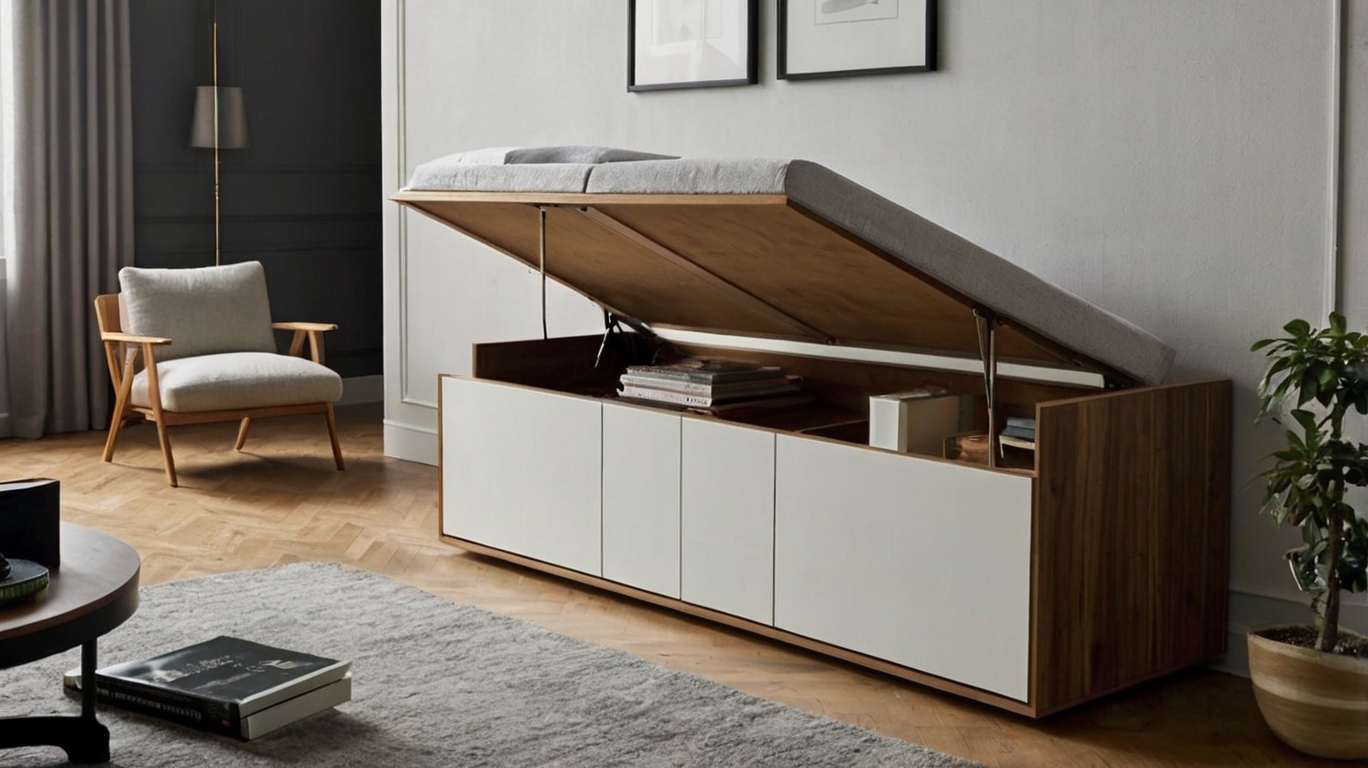
Slim-profile furniture is replacing bulky pieces. The new standard? Storage pieces less than 12 inches deep that hug walls without dominating rooms. Corner solutions are finally getting the attention they deserve with triangular cabinets and diagonal shelving that transform dead space into storage gold.
The coolest development? Ceiling storage. Automated systems that lower when needed and retract when not. Perfect for seasonal items or those fancy dishes you only use when the in-laws visit.
B. Transformable furniture with hidden storage
The furniture that’s taking 2025 by storm doesn’t just sit there looking pretty—it shape-shifts while hiding your stuff.
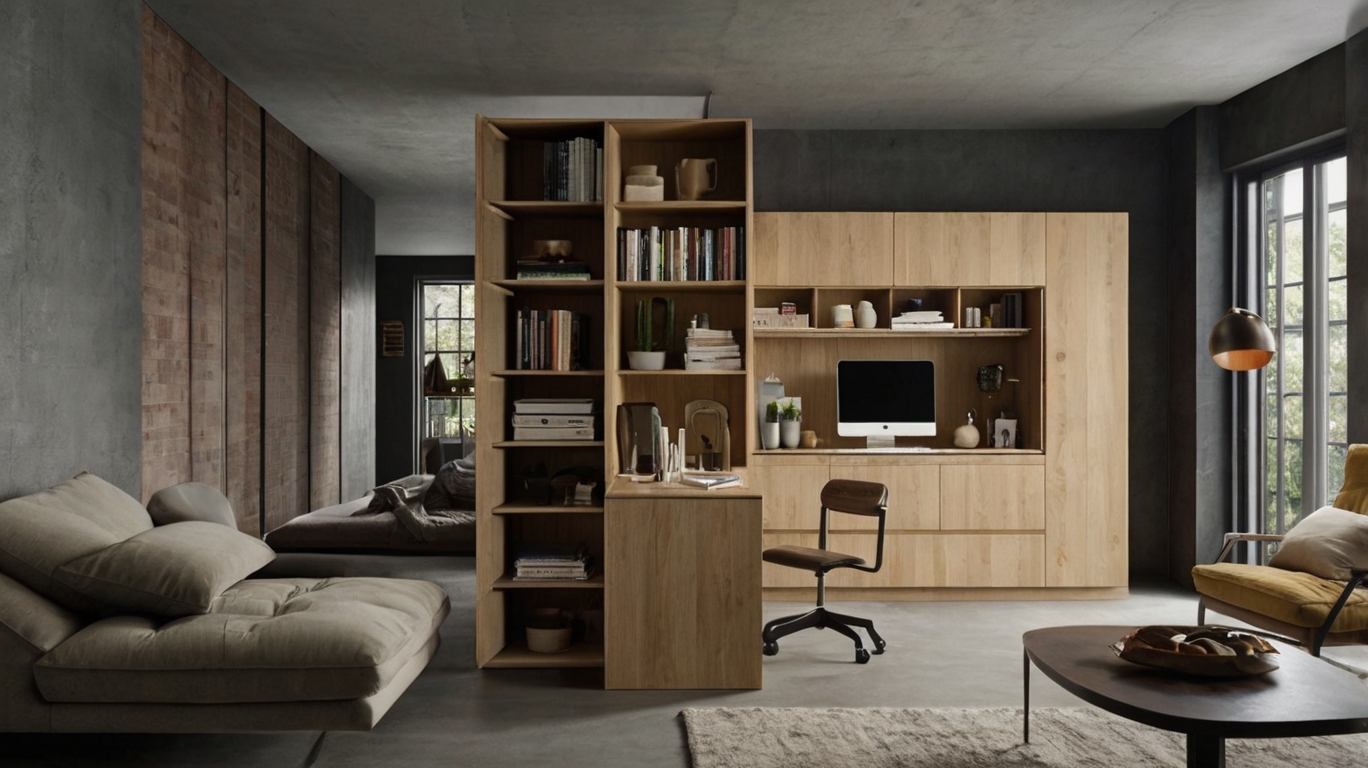
Coffee tables now lift to become work desks with hidden compartments for laptops and chargers. When you’re done, everything tucks away and your living room transforms back in seconds.
Beds are storage powerhouses with hydraulic lift systems revealing cavernous storage underneath—way better than those old drawer systems that were impossible to access. Some innovative designs feature headboards that slide open to reveal shelving or fold down to become desks.
Ottomans and poufs aren’t just for putting your feet up anymore. The best ones in 2025 flip open to store blankets, rotate to reveal book storage, or separate into smaller seating with storage cores.
Dining furniture hasn’t been left behind either. Tables expand from compact two-person units to dinner-party-ready while chairs nest perfectly underneath, each with lift-up seats hiding storage for table linens or emergency snacks.
C. Eco-friendly materials in minimalist storage
The minimalist storage movement has gone seriously green for 2025. Recycled plastic is getting a luxury makeover—ocean plastic transformed into smooth, marbled storage containers you’d swear were high-end resin.
Bamboo has evolved beyond cutting boards. The super-sustainable grass is now engineered into sleek, joinery-free drawer systems and modular boxes with a strength-to-weight ratio that puts traditional hardwoods to shame.
Cork is having its moment too. The naturally antimicrobial material is perfect for bathroom storage where moisture and germs are concerns. Plus, its sound-dampening properties mean no more slamming drawers.
Mycelium composite (basically mushroom roots) is the breakthrough material nobody saw coming. Grown rather than manufactured, these biodegradable units are lightweight but surprisingly durable. The organic patterns make each piece unique.
The finishing touches matter too—water-based, zero-VOC finishes are standard, and natural oils have replaced chemical sealants. The whole package delivers clean lines with a clean conscience.
D. The rise of modular storage systems
Modular storage is taking customization to new heights in 2025. Think LEGO for adults, but make it sophisticated.
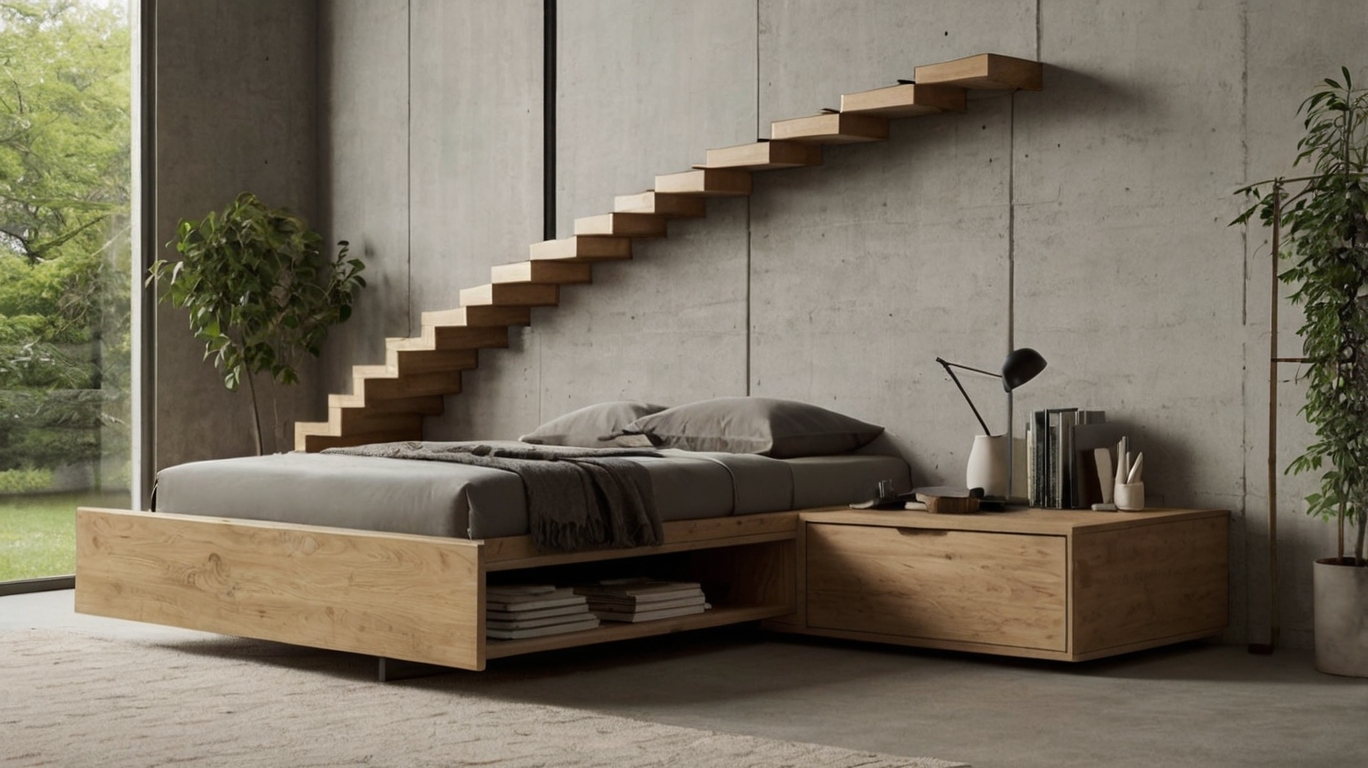
The key innovation? Universal connection points. Unlike previous generations where you were locked into one brand’s ecosystem, today’s modules work together across manufacturers. This standardization has blown customization wide open.
AI-assisted design apps now scan your space and suggest optimal configurations based on your specific needs. They’ll even project how the system can evolve as your storage needs change over time.
Color-coding has gone subtle. Instead of kindergarten primary colors, modular systems now feature gradient tones that create visual organization while maintaining aesthetic harmony. The pieces fit your color scheme, not the other way around.
Installation has become ridiculously simple with magnetic or clip-based assembly requiring zero tools. Many systems can be reconfigured in minutes when you need to adapt to new storage challenges or just want a fresh look.
The best part? When you move, everything breaks down into manageable pieces that reassemble in your new space—storage that grows with your life.
Sustainable Storage Innovations-contemporary storage furniture for 2025
- Recycled and upcycled materials trending in 2025
The storage furniture world is having a serious eco-awakening. In 2025, we’re seeing designers ditch virgin materials in favor of giving new life to what already exists.
Reclaimed wood isn’t just popular—it’s practically mandatory for forward-thinking brands. But not the rustic barn door aesthetic from the 2010s. Today’s recycled wood storage pieces feature sleek finishes and contemporary silhouettes that completely mask their previous lives.
Ocean plastic is the material nobody expected to dominate high-end storage. Companies are collecting plastic waste from oceans and transforming it into stunning storage containers, shelving systems, and drawer organizers with surprisingly luxe appearances.
Ever heard of mushroom leather? It’s now covering storage ottomans and decorative boxes. This biodegradable alternative feels remarkably similar to the real thing but comes without the environmental baggage.
2.Carbon-neutral manufacturing processes
The carbon footprint of furniture production is finally getting the attention it deserves. Manufacturers are completely reimagining their processes from the ground up.
Solar-powered production facilities have become the standard rather than the exception. Many leading storage furniture brands now run their entire operations on renewable energy, slashing emissions dramatically.
Local manufacturing hubs are replacing centralized factories. This distributed model cuts transportation emissions while supporting local economies—a win-win that consumers are willing to pay extra for.
Digital fabrication technologies have revolutionized efficiency. Computer-controlled cutting systems minimize material waste to near-zero levels, while 3D printing allows for complex designs that use significantly less raw material.
3. Biodegradable storage options
Gone are the days when furniture was designed to last forever—or worse, fall apart quickly and sit in landfills for centuries.
Mycelium-based storage components are taking center stage. These fungal structures can be grown in molds to create fully biodegradable shelving units, drawer dividers, and storage bins that return to the earth when their useful life ends.
Plant-based bioplastics have finally overcome their durability issues. The latest formulations provide the strength and flexibility needed for storage containers while maintaining their ability to decompose naturally.
Compostable textiles are wrapping storage ottomans and baskets. These fabrics, made from materials like hemp, nettle, and agricultural waste, break down completely within months when composted at end-of-life.
Aesthetic Evolution in Storage Design
- Bold color palettes replacing neutral tones
Gone are the days when storage meant beige boxes tucked away in corners. 2025’s storage pieces are making serious color statements. Jewel tones like emerald green, sapphire blue, and ruby red are dominating showrooms, with designers using color blocking techniques to create visual impact.
Deep, moody hues aren’t just for walls anymore – they’re showing up on credenzas, bookcases, and media consoles. These bold choices turn functional pieces into room anchors rather than afterthoughts.
What’s really shaking things up? The rise of ombré and gradient finishes on cabinet fronts. These techniques create depth and dimension that flat colors simply can’t match.
- Mixed material compositions for visual interest
The monolithic storage unit is officially passé. Today’s standout pieces combine multiple materials in surprising ways. Think brass-framed shelving units with marble dividers, or walnut cabinets with concrete door fronts.
Glass is making a major comeback, but with a twist – textured, fluted, and tinted varieties add sophistication while still showing off what’s inside. The juxtaposition of warm woods against cool metals creates tension that draws the eye.
Smart designers are using material contrasts to highlight functional aspects of storage – metal pulls against matte finishes, or leather drawer fronts within wooden frames.
- Curved and organic shapes overtaking rigid designs
The boxy storage unit is getting a serious makeover. Curved frontages, rounded corners, and flowing lines have replaced harsh angles and rigid geometries. These organic shapes aren’t just visually appealing – they create a more harmonious relationship with other furnishings.
Wave-like patterns on cabinet doors and undulating shelf designs showcase craftsmanship while creating visual rhythm. The influence of biophilic design is unmistakable, with forms that echo natural elements like river stones and leaf shapes.
- Statement hardware as focal points
Hardware is no longer an afterthought. Oversized handles, uniquely shaped knobs, and custom pulls are transforming storage pieces into artistic statements. Materials like hand-forged bronze, ceramic, and even semi-precious stones are elevating the humble drawer pull to jewelry-like status.
Contrast is key – matte black hardware against light surfaces creates dramatic shadows, while brass against deep colors adds luxurious warmth. Some designers are going further by eliminating visible hardware entirely, using push-open mechanisms for ultra-clean lines.
Specialized Storage for Modern Lifestyles
Work-from-home office storage solutions
Gone are the days of stuffing work materials into kitchen drawers. The 2025 storage scene is all about dedicated WFH solutions that actually look good in your living space.
The hottest trend? Disguised workstations that transform in seconds. Think wall units that fold down into complete desks with built-in charging stations, file storage, and cable management systems. When you’re done working, just fold it up and—poof!—your living room is back.
Smart cabinets with fingerprint locks are becoming must-haves for households where sensitive work documents need safekeeping from curious kids or roommates. These sleek units blend seamlessly with your existing furniture while keeping your work life secure.
For the apartment dweller, look for under-sofa rolling drawer systems designed specifically for laptops and office supplies—perfect for those without a dedicated office space.
Fitness equipment concealment systems
Let’s be honest—nobody wants to stare at dumbbells during dinner.
The newest storage systems cleverly hide your home gym without sacrificing quick access. Ottoman benches that open to reveal yoga mats, resistance bands, and small weights are selling out everywhere.
Wall-mounted cabinet systems with specialized compartments for everything from jump ropes to spin shoes keep your fitness gear organized and out of sight. Some even include ventilated sections for those post-workout clothes waiting to hit the laundry.
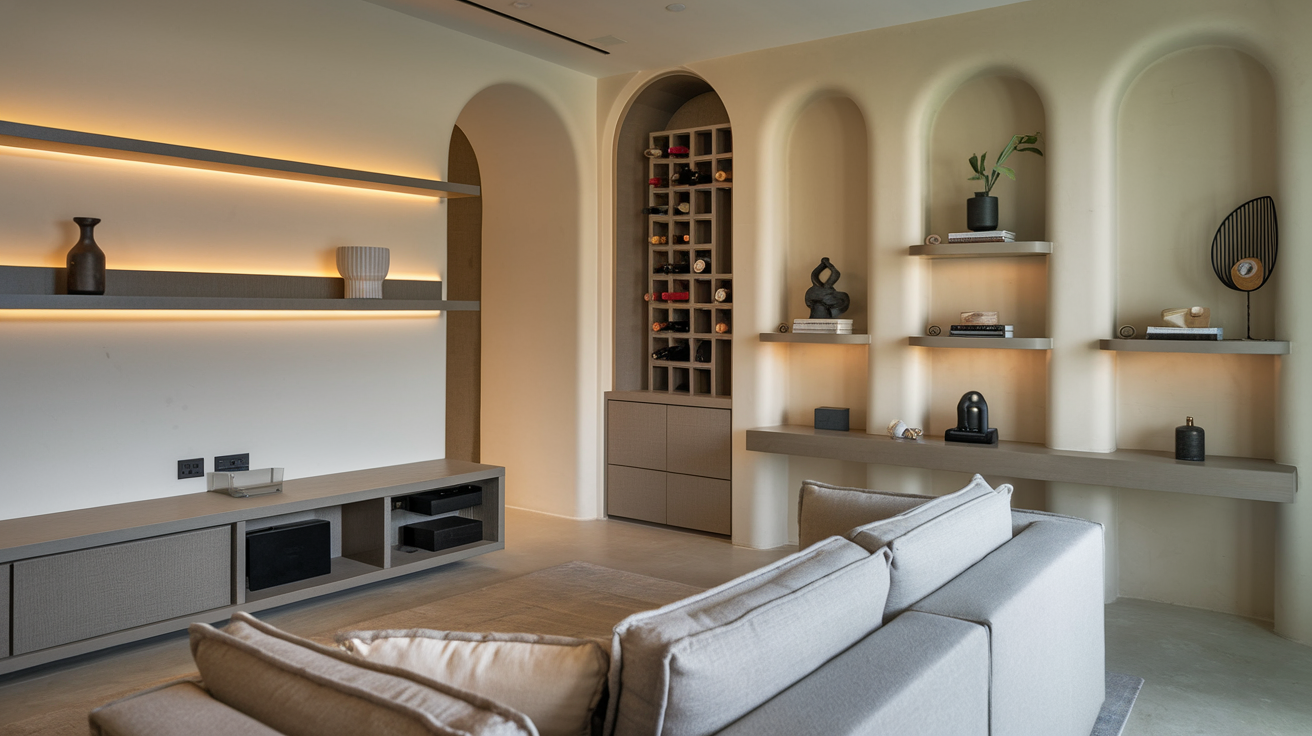
For bigger equipment, furniture makers have developed credenzas and room dividers that can house a folded treadmill or stationary bike, complete with moisture-resistant finishes to handle sweaty gear.
Entertainment center evolution
The entertainment center of 2025 barely resembles its bulky ancestors.
Today’s designs feature modular components that adapt to changing tech. Floating systems with disappearing cable pathways create the illusion that your 85-inch screen is floating in mid-air, while concealing gaming consoles, sound systems, and streaming devices.
The coolest delopment? Temperature-controlled drawers for preserving vintage vinyl, gaming cartridges, and other collectibles right within your entertainment center.
Multi-zoned units allow different family members to access their entertainment options simultaneously—one section for the kids’ games, another for dad’s record collection, and a third for mom’s books, all in one cohesive piece.
Pet-friendly storage innovations
Your furry friends are finally getting the designer treatment they deserve.
Bench seating with hidden litter box compartments (complete with odor-filtering ventilation) have become the saving grace for cat owners in small spaces. These units include storage for food, toys, and grooming supplies all in one place.
For dog owners, entryway furniture now incorporates dedicated “mudroom” features—pull-out drawers with washable liners for dirty paws, hooks for leashes, and sealed containers for treats.
The most innovative designs integrate pet beds directly into sideboards and console tables, giving your pet a cozy spot while maximizing your square footage.
Customizable storage for diverse household needs
One-size-fits-all is officially dead in 2025’s storage scene.
Manufacturers are embracing modular systems that consumers can reconfigure as their needs change. Building-block-style units allow you to add, subtract, or rearrange components when your collection of hobbies expands or your family situation changes.
Color-coding has gone high-tech with LED-lit drawer systems that can be programmed to different colors for different family members—no more confusion about whose stuff goes where.
The most forward-thinking brands offer subscription services where you can swap out components seasonally—winter sports equipment storage in December, gardening tool organization in spring—keeping your storage as dynamic as your life.
As we look toward 2025, storage furniture is evolving beyond mere functionality to become a harmonious blend of purpose, technology, and style. From minimalist multi-functional pieces that maximize limited living spaces to smart storage with integrated charging stations and app connectivity, today’s storage solutions are addressing the demands of contemporary living. The growing emphasis on sustainability has brought eco-friendly materials and circular design principles to the forefront, while aesthetic trends embrace both bold expressions and seamless integration with living spaces.
The way we organize our possessions reflects our changing lifestyles, with specialized storage catering to remote work setups, wellness routines, and digital entertainment systems becoming increasingly important. When selecting storage furniture for the coming years, prioritize pieces that align with your practical needs while reflecting your personal style and values—whether that’s through sustainable materials, smart technology integration, or innovative space-saving designs. The ideal storage solution for 2025 doesn’t just store your belongings; it enhances your lifestyle and expresses your unique vision of home.
